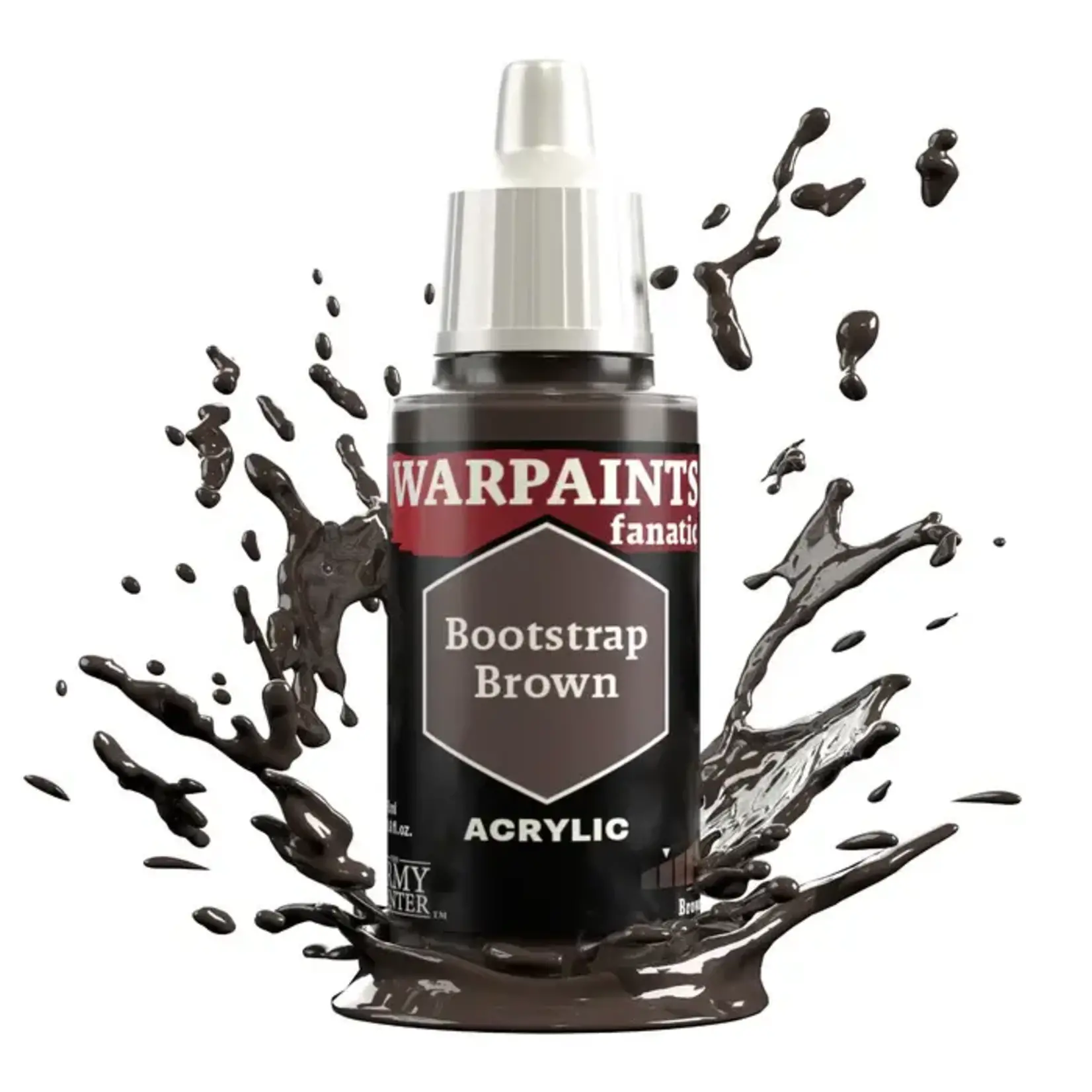Depict everything from the soil of a farmer’s field to the rugged terrain of a mountain pass with the Flexible Triad: Browns. Besides natural terrains and scenery, the colours included in this Flexible Triad are also perfect for painting textures, tones of leather and fabric, and the wooden parts of weapons and tools. This triad can help you pull of the look of everything from military uniforms to the simple robes of a monk.
The Browns Triad is suitable for projects across all genres of miniature painting, from historical and military figures to fantasy creatures and sci-fi models.
The Flexible Triad: Browns consists of:
- Warpaints Fanatic: Brigandine Brown
- The Warpaints Fanatic: Brigandine Brown is our darkest brown and this blackish brown is the ideal base colour for most brown projects. It’s the darkest tone from the “Browns” Flexible Colour Triad and its Practical Colour Name is “Blackish Brown”.
- Warpaints Fanatic: Bootstrap Brown
- The Warpaints Fanatic: Bootstrap Brown is a deep brown that works equally well as a base tone or layer. It’s the second-darkest tone from the “Browns” Flexible Colour Triad and its Practical Colour Name is “Deep Brown”.
- Warpaints Fanatic: Leather Brown
- The Warpaints Fanatic: Leather Brown is a neutral brown that is a match to the Warpaint Air and Colour Primer of the same name. It’s one of the two middles tones from the “Browns” Flexible Colour Triad and its Practical Colour Name is “Brown”.
- Warpaints Fanatic: Paratrooper Tan
- The Warpaints Fanatic: Paratrooper Tan is a light brown that can stand on its own as a base tone or highlight. It’s one of the two middles tones from the “Browns” Flexible Colour Triad and its Practical Colour Name is “Light Brown”.
- Warpaints Fanatic: Command Khaki
- The Warpaints Fanatic: Command Khaki is a pale brown that is a nice mid to high tone for browns. It’s the second-lightest tone from the “Browns” Flexible Colour Triad and its Practical Colour Name is “Pale Brown”.
- Warpaints Fanatic: Urban Buff
- The Warpaints Fanatic: Urban Buff is a very pale brown that is the natural highlight choice for browns. It’s the lightest tone from the “Browns” Flexible Colour Triad and its Practical Colour Name is “Very Pale Brown”.
The Flexible Colour Triad System is a segment, or family, of six colours that range from dark to light with a consistent hue. This system allows you to easily select paints that create a natural colour progression on your miniatures. This is an easy way to create a colour scheme for your miniature when army painting because you always have 27 Flexible Triads to choose from instead of mixing colours.
The system builds upon the traditional triad system by introducing more versatility and adaptability in colour selection, expanding the conventional three colours to six. This gives you almost endless possibilities for putting colours together within the triad.
When using a triad system, you usually select 3 colours (a base, a shade, and a highlight), depending on the level of contrast you want on your miniature. For instance, for minimal contrast, opt for 3 adjacent colours to achieve a smooth colour transition. For maximum contrast, use the lightest, middle, and darkest colour available in the flexible triad.









